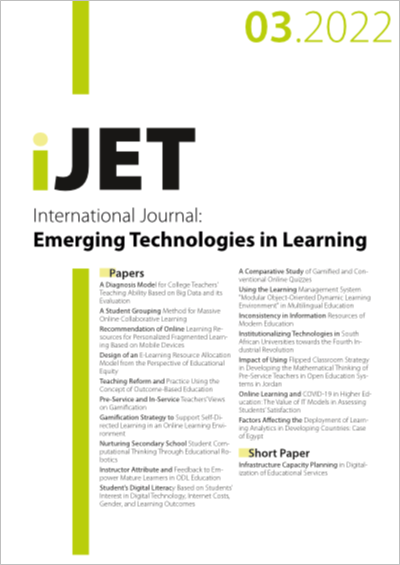A Student Grouping Method for Massive Online Collaborative Learning
DOI:
https://doi.org/10.3991/ijet.v17i03.29429Keywords:
cooperative learning, massive online learning, collaborative learning, student groupingAbstract
As a brand-new learning strategy, cooperative learning can greatly improve the quality of classroom teaching and the teamwork and learning efficiency of students. The conventional student grouping models for cooperative learning take less consideration of the complementarity of students’ knowledge structures and learning interests, so they are not quite suitable for online teaching, which is provided for a huge number of students and has a large scale of learning resources and great freedom of choice. To this end, this paper studies the student grouping method for massive online collaborative learning. Firstly, the problem of identifying the student’s knowledge state was described and characterized, and a diagnosis model of students’ knowledge state simulating the cooperative learning process was constructed based on the gated recurrent neural network. The creation of an online collaborative learning scenario that considers both the knowledge state and interests of students was regarded as an NP-hard problem, and then, the enhanced particle swarm optimization algorithm was adopted to realize the grouping of students for massive online collaborative learning. The experimental results verified the effectiveness of the model constructed in this paper.
Downloads
Published
How to Cite
Issue
Section
License
Copyright (c) 2022 Nan Zhang (Submitter); Yuan Wang, Qi Wang

This work is licensed under a Creative Commons Attribution 4.0 International License.



